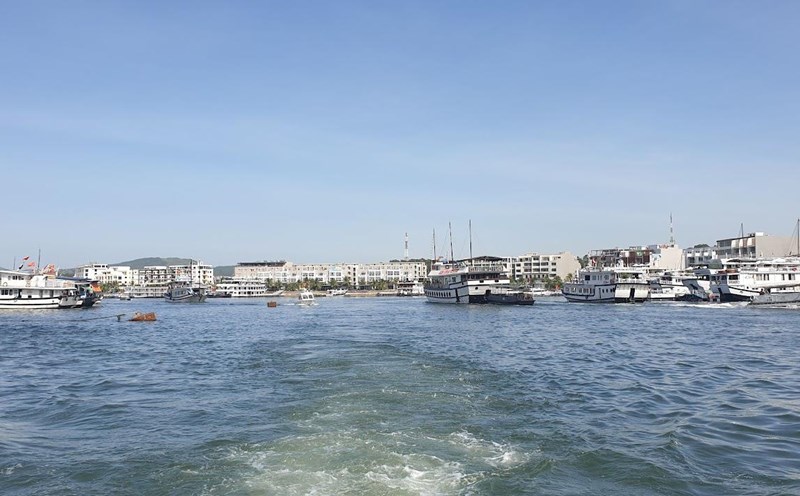Peacetime Volunteers
“It was one of the most difficult decisions in my revolutionary career,” Major General Le Quang Vien - former Commander of Dong Thap Provincial Military Command - shared about the campaign to advance into Dong Thap Muoi (DTM).

In the days after the country's reunification, the Standing Committee of Dong Thap Provincial Party Committee met to discuss the exploitation of the DTM. The majority of opinions suggested that "it should not be done" because according to international acid sulfate soil experts, it would cost up to 1 million USD to exploit 1 hectare of acid sulfate soil in the DTM. They even warned: "Poking" into the acid sulfate soil is like hitting a rock. However, with determination and military vision, Mr. Vien tried to convince them. "It's not that he's talented, perhaps because they know I care about feeding the people, the collective supports me," Mr. Vien shared.
This reality further urged Mr. Vien to launch the fastest land reclamation offensive with a very simple thought: send troops to exploit, if successful, the people will be well-off; otherwise, it will only waste... "soldiers' labor".
And with the strategic vision of a soldier who had traveled from the South to the North, he also secretly aimed for the goal of creating a border fence. “At that time, Mr. Vo Van Kiet especially supported this idea. He encouraged us to attack with the highest determination,” Mr. Nguyen Thanh Phong - former Chairman of the People's Committee of Dong Thap province - shared.

Later, when summarizing the program of exploiting the Dong Thap River Delta, many scientists and managers noted: Thanks to the attack of Uncle Ho's Army, the Dong Thap River Delta desert became a large rice granary of the whole country. In particular, it also created a solid border defense line, helping Dong Thap reduce losses compared to many localities in the Southwestern border war.
Light up the sea
Colonel Pham Ngoc Trong (Ba Trong) - former Director of the Giong Gang Farm (now the 959 National Defense Economic Group, Dong Thap Province Military Command) - recalled: At that time, as soon as the sun set, everyone had to hide under mosquito nets to avoid mosquitoes. There were so many rats that after each night of trapping, we had to dig holes to bury them because we couldn't eat and process them all.
However, with the offensive spirit of Uncle Ho's Army, the soldiers were still determined to go up the embankment, complete the 10-hectare experimental rice growing area in Go Cao area (now K12, Phu Hiep commune, Tam Nong district) and start growing two rice crops.
“On the day of planting, people came to check because no one thought the army could do it. Even when they saw the green rice plants growing in the middle of the alum field, many people were still hesitant. But when the harvest yield reached 5 tons/ha, many old farmers gave compliments,” Mr. Trong recalled.
After this success, the farm boldly expanded the rice growing area to 100 hectares and then 1,000 hectares. “In addition to calling for volunteer engineers, we sought all opinions and suggestions from scientists, especially the “rice expert” Vo Tong Xuan of Can Tho University,” Colonel Trong explained the reason for the success.

From this solid foundation, it urged departments and localities to join in the exploitation, bringing the DTM from the acid sulfate soil area with one-crop rice crop, the output of about 260,000 tons (in 1975) to 1 million tons in 1988.
Under the direction of the Provincial Military Command, the farms not only transferred rice seeds, but also transferred seed sowing methods, alum “suppression” techniques and many other supports to help people have enough to eat and feel secure in starting a business. “Not only did we allocate land with a minimum quota of 3 hectares/household, we also gave pig and cow breeds for people to use for short-term and long-term use,” Mr. Vien recalled.
When everything had stabilized, the former wasteland had grown into 9 communes and 1 town, Uncle Ho's soldiers handed over 3,000 hectares of land to local management, to embark on a task that promoted the entire region: Investing in inter-regional transportation systems, building many border residential areas...
Dong Thap Muoi, a 700,000ha wetland in Dong Thap, Tien Giang and Long An, has been a land reclamation movement since its inception. This is the foundation that has transformed Vietnam from a food-deficient country to a leading rice exporter in the world.











